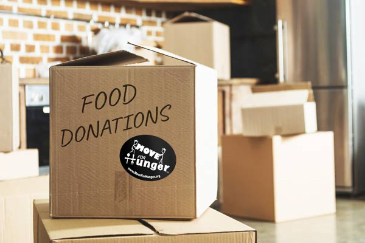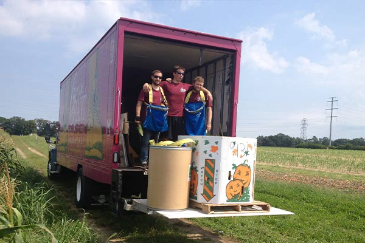About Food Waste
Have you ever let a piece of fruit grow moldy in your refrigerator, simply because you forgot it was there? Have you ever thrown away a can of soup because it was past the “best by” date stamped on the label? Did you ever wonder what happens to all of the produce in the supermarket that goes unsold, or what your favorite restaurant does with all of their leftovers at the end of the day?
It goes to waste, along with 38% of the food in the United States that goes unsold or uneaten.
It’s hard to believe that, in a country where more than 44 million people face hunger every day, so much food could go uneaten. Yet, this is precisely what is happening – and we’re all partially to blame. Perfectly good food is being wasted at every level of the supply chain: on the farm, during distribution, at the store, and in our homes. In addition to the enormous humanitarian cost, our food waste epidemic is also an economic and environmental catastrophe.
Food is being wasted at every level of the supply chain
FARM
DISTRIBUTION
GROCERY STORE
HOME
The Humanitarian Cost
What does it say about us that we’re willing to let millions of pounds of nutritious fruits and vegetables rot when so many people are hungry? According to The National Resource Defense Council, if we were able to rescue just 15% of the food we waste, we’d save enough to feed 25 million Americans each year. ReFed believes that by implementing food recovery solutions, we could provide 1.8 billion meals to people who are in need.
BY IMPLEMENTING FOOD RECOVERY SOLUTIONS WE COULD BE DONATING 1.8 BILLION MEALS EVERY YEAR TO PEOPLE WHO ARE IN NEED.
The Economic Cost
Wasting food is a waste of money. According to ReFed, American consumers, businesses, and farms spend $218 billion, or 1.3% of our gross domestic product, growing, processing, and disposing of food that is never eaten. Businesses are taking $74 billion loss on food waste every year.
Most of the waste, however, is happening in our own kitchens. ReFed’s research shows that 43% of food wasted by weight – 27 million tons every year – occurs at home. American consumers are spending $144 billion dollars each year on food that they ultimately just throw in the trash.
The Environmental Cost
Equally troubling is what this absurd amount of waste is doing to our environment. A report from the United Nations’ Food and Agriculture Organization estimated that the carbon footprint of food waste was 7% of all global emissions. A recent study by the Potsdam Institute for Climate Impact Research showed that more than 20% of all greenhouse gas emissions are produced by agricultural activities. To waste so much food, then, is to needlessly contribute to climate change. Not to mention the resources we are squandering – 21% of all fresh water, 18% of cropland, and 19% of fertilizer – in the service of producing food that will only end up in the trash.
Speaking of trash, the Environmental Protection Agency points out that most of the material filling our landfills is organic matter, such as food waste. When that material gets buried in the dump, it decomposes anaerobically and releases methane, a greenhouse gas 25x more harmful than carbon dioxide. A report from the United Kingdom’s Food Waste Recycling Action Plan (WRAP) says that if food scraps were eliminated from landfills, the corresponding reduction in greenhouse gas emissions would be the equivalent of removing 20% of all the cars in the country from the road.
What Produces greenhouse gas emissions?
How to Reduce Food Waste
Clearly, this is a BIG problem. So, the question is: what can we do about it?
One of the most simple, sensible things you can do is to donate your food when you move. Share what you can spare with the 1 in 8 Americans who are facing hunger each day.
Next, learn ways that you can reduce food waste at home. There are a number of simple steps that you can take today.

Move For Hunger has made it a priority to seek out opportunities for members of our network to rescue food from big events, to participate in gleanings, and to continue to raise awareness about the issue. The scale of the problem, however, necessitates much broader action. That means we must also encourage our fellow consumers, the food industry, businesses, schools, and elected officials to make reducing food waste a priority.
We’re facing a massive problem, but we’ve also been presented with an amazing opportunity to produce an aggregate financial benefit to society, divert an enormous amount of waste, reduce carbon emissions, save water, create jobs, and recover millions of meals for people in need. We hope you’ll join us in the fight.




